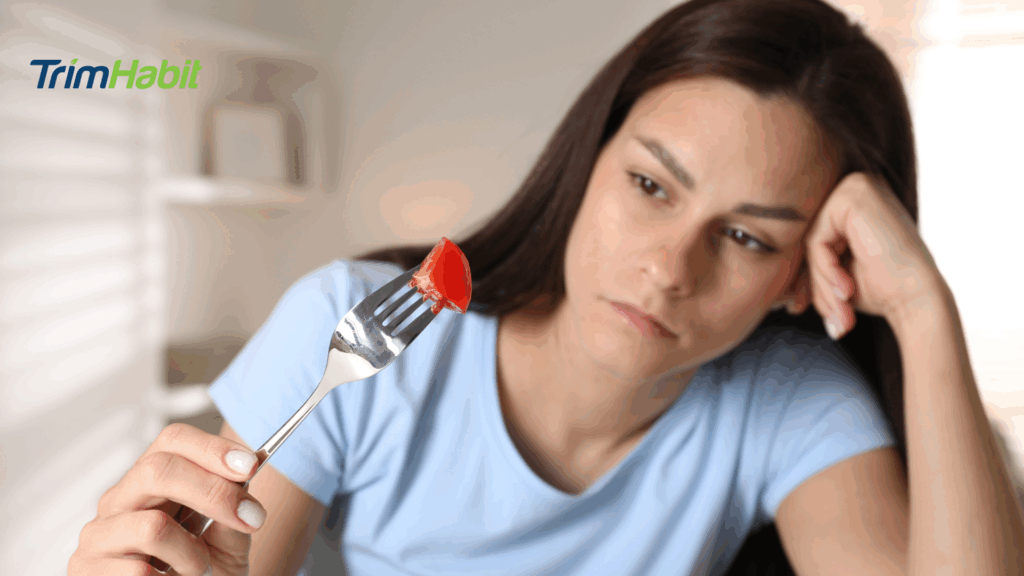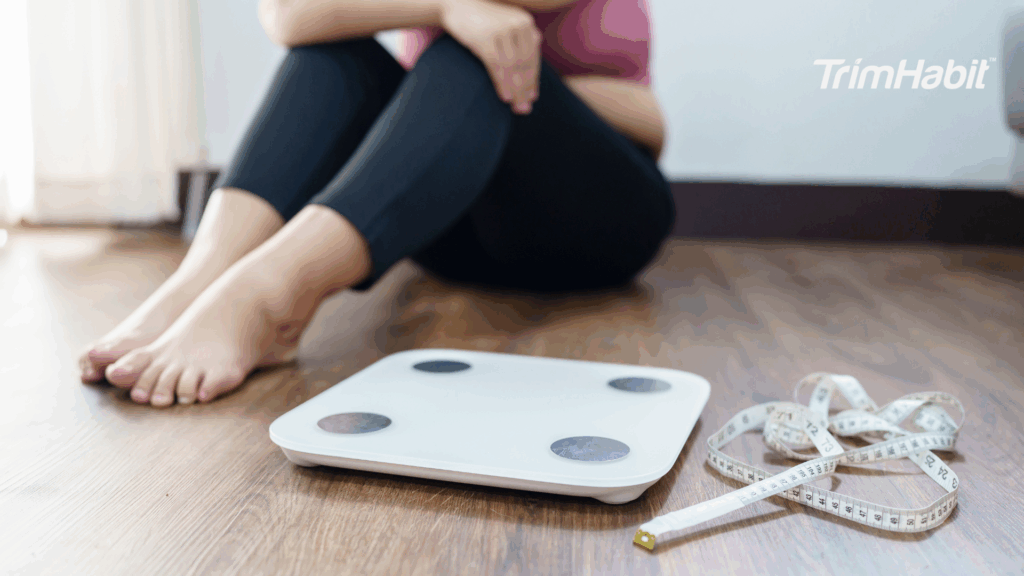Semaglutide is widely used today to help manage type 2 diabetes and support weight loss, and many people are turning to it because it really works. Like most medications, it can come with side effects. One of the most common is constipation, which can be uncomfortable and frustrating, especially if your diet includes a lot of sugary foods. The good news is that what you eat can make a big difference. Adding more fiber to your meals is a simple change that often brings real relief.
In this article fiber-rich meals for semaglutide-induced constipation, that support digestive health and align with the nutritional needs of individuals taking semaglutide. Whether new to the medication or seeking natural ways to ease side effects, these meal ideas can help keep your gut moving and your body feeling its best.
Semaglutide Overview
Semaglutide is a glucagon-like peptide-1 receptor agonist (GLP-1 RA) used to manage type 2 diabetes and obesity. It is a long-acting analog of the naturally occurring hormone GLP-1, which regulates blood glucose levels and appetite. By mimicking GLP-1, semaglutide enhances insulin secretion in response to high blood sugar, suppresses glucagon release, slows gastric emptying, and promotes satiety, reducing food intake1.
Semaglutide comes in both injectable and oral forms. The injectable version is typically taken once a week, while the oral form is usually taken once a day. Common side effects include nausea, vomiting, diarrhea, and constipation, particularly during the initial dose escalation period. Rare but serious risks include pancreatitis, gallbladder disease, and, in some cases, a potential increase in the risk of thyroid C-cell tumors.
Semaglutide is not recommended for individuals with a personal or family history of medullary thyroid carcinoma or multiple endocrine neoplasia syndrome type 2 (MEN 2).
Understanding The Role Of Fiber
Dietary fiber is a type of carbohydrate that the body cannot digest. While most carbohydrates are broken down into sugar molecules, fiber passes through the digestive tract largely intact. Despite this, it plays several crucial roles in maintaining overall health, especially when avoiding unhealthy fats2.
Types of Fiber
Soluble Fiber
- Dissolves in water to form a gel-like substance
- Helps lower blood cholesterol and glucose levels
- Found in oats, barley, beans, lentils, apples, and citrus fruits
Insoluble Fiber
- Does not dissolve in water
- Adds bulk to the stool and helps food pass more quickly through the stomach and intestines
- Found in whole grains, nuts, beans, and vegetables like cauliflower and potatoes
Health Benefits of Fiber
Digestive Health
- Promotes regular bowel movements
- Prevents constipation and diverticulosis
- Supports gut microbiome by feeding beneficial bacteria
Heart Health
- Helps lower total and LDL cholesterol
- May reduce blood pressure and inflammation
- Associated with reduced risk of heart disease
Blood Sugar Control
- Slows absorption of sugar, helping improve blood glucose control
- Particularly beneficial for people with or at risk for type 2 diabetes
Weight Management
- Adds bulk to the diet without adding calories
- Increases satiety (feeling of fullness), which can reduce overall calorie intake
Colorectal Cancer Risk Reduction
- Associated with a lower risk of colorectal cancer, potentially due to its effects on bowel health and gut bacteria
Recommended Daily Intake
- Men under 50: 38 grams/day
- Women under 50: 25 grams/day
- Men over 50: 30 grams/day
- Women over 50: 21 grams/day
Most adults consume far less than the recommended amount.
Tips to Increase Fiber Intake
- Choose whole fruits over juice
- Switch to whole-grain bread, pasta, and rice
- Add legumes (beans, lentils, chickpeas) to salads, soups, or stews
- Snack on nuts, seeds, and raw vegetables
- Read food labels to choose higher fiber rich foods
Important Note
- Increase fiber intake gradually to prevent bloating or gas
- Drink plenty of water to help fiber move through the digestive system
Fiber-Rich Meals For Semaglutide-Induced Constipation
Constipation is a common side effect of semaglutide, especially during dose increases. To help relieve constipation without causing more digestive discomfort, it is helpful to increase dietary fiber, especially soluble fiber. Staying well hydrated, adding light physical activity, and using stool softeners if needed can also ease this side effect3.
Nutritional Approach
Focus on:
- 25–30 grams of fiber per day
- A balance of soluble fiber (to soften stool) and insoluble fiber (to add bulk and promote movement)
- Staying well-hydrated with at least 6-8 cups of water daily
- Avoiding heavy, fatty meals that can slow digestion
High-Fiber Foods to Emphasize
- Soluble fiber sources include oats, apples, pears, bananas, sweet potatoes, flaxseed, chia seeds, lentils, and carrots.
- Insoluble fiber sources include whole wheat bread, brown rice, leafy greens, broccoli, beans, and nuts.
- Gut-friendly options like plain yogurt or kefir with live cultures may support digestion.
Meal Plan Samples
Sample Day 1
Breakfast
- Warm oatmeal topped with chia seeds, sliced banana, and a spoonful of almond butter
- A glass of water or warm herbal tea
Snack
- A pear and a small handful of walnuts
Lunch
- Lentil and vegetable soup with a slice of whole grain bread
- Mixed green salad with olive oil and lemon
Snack
- Greek yogurt with ground flaxseed and a few blueberries
Dinner
- Grilled salmon or tofu with quinoa and steamed broccoli
- Roasted carrots or sautéed spinach on the side
Optional Evening Snack (if needed)
- A kiwi or stewed prunes (both are natural laxatives)
Sample Day 2
Breakfast
- Whole grain toast with mashed avocado and sliced tomato
- A clementine or small orange
- Water with lemon
Snack
- Apple slices with peanut butter
Lunch
- Brown rice bowl with black beans, corn, shredded lettuce, avocado, and salsa
- A handful of cherry tomatoes on the side
Snack
- Unsweetened kefir or plain yogurt with chia seeds and cinnamon
Dinner
- Baked sweet potato topped with sautéed kale and chickpeas
- A side of roasted zucchini or asparagus
Evening Snack
- Stewed apples with cinnamon and oats (can be served warm or chilled)
Sample Day 3
Breakfast
- Smoothie with spinach, frozen berries, chia seeds, ground flaxseed, and almond milk
- A slice of whole-grain toast
Snack
- Carrot sticks and hummus
Lunch
- Quinoa salad with cucumbers, bell peppers, parsley, and a lemon-olive oil dressing
- Grilled tofu or chicken breast
Snack
- A kiwi or a few dried apricots (unsulfured, no added sugar)
Dinner
- Stir-fried tempeh or shrimp with broccoli, bok choy, and brown rice
- Side of miso soup with seaweed
Evening Snack
- A small bowl of mixed berries (raspberries, blackberries, blueberries)
Sample Day 4
Breakfast
- High-fiber cereal (e.g., bran flakes) with unsweetened almond milk and sliced banana
- A few walnuts
Snack
- Hard-boiled egg and a handful of grapes
Lunch
- Whole grain wrap with hummus, shredded carrots, spinach, and sliced cucumber
- A side of lentil soup
Snack
- A peach or small handful of trail mix with seeds and dried fruit
Dinner
- Grilled chicken or lentil patties with barley and roasted Brussels sprouts
- Side of mixed greens with olive oil vinaigrette
Evening Snack
- A baked pear with cinnamon and oats
Sample Day 5
Breakfast
- Steel-cut oats cooked in water or unsweetened almond milk
- Topped with ground flaxseed, chopped dates, and diced pear
- Herbal tea (like ginger or chamomile) or a glass of water
Snack
- A small bowl of edamame (steamed, lightly salted)
- A few baby carrots
Lunch
- Farro salad with roasted eggplant, cherry tomatoes, parsley, and tahini-lemon dressing
- A small bowl of split pea soup
- Cucumber and radish slices on the side
Snack
- Unsweetened plain yogurt (or non-dairy version) with psyllium husk stirred in
- A few slices of papaya
Dinner
- Stuffed bell peppers with brown rice, lentils, diced zucchini, and spices
- Steamed green beans with a drizzle of olive oil and slivered almonds
- Optional side of pickled beets or sauerkraut for natural probiotics
Evening Snack (Optional)
- Warm stewed rhubarb and strawberries with a spoonful of oat bran
Additional Tips
Here are some additional tips to help manage semaglutide-induced constipation effectively and safely, alongside a fiber-rich diet:
Hydration is Essential
- Drink at least 6–8 cups (1.5–2 liters) of water daily, more if you’re increasing fiber intake.
- Warm fluids, such as herbal teas or warm lemon water, can help stimulate digestion.
- Avoid excessive caffeine and alcohol, which can dehydrate and worsen constipation.
Increase Fiber Gradually
- Introduce high-fiber foods slowly over several days to give your digestive system time to adjust and avoid fried foods.
- Sudden fiber increases can cause bloating, gas, or cramping.
Incorporate Physical Activity
- Gentle movement, such as walking for 10–20 minutes after meals, helps stimulate bowel activity.
- Regular exercise supports gut motility and overall digestion.
Maintain a Regular Meal Schedule
- Eating meals consistently daily helps train your digestive system to stay on a schedule.
- Skipping meals can disrupt regular bowel habits.
Use Natural Laxatives (As Needed)
- Foods like kiwi, prunes, pears, chia pudding, and stewed apples can act as natural, gentle laxatives.
- Avoid stimulant laxatives unless prescribed, as overuse can worsen symptoms long term.
Prioritize Gut-Friendly Foods
- Fermented foods such as plain yogurt, kefir, sauerkraut, kimchi, or miso support a healthy gut microbiome.
- A diverse, fiber-rich diet helps nourish beneficial gut bacteria.
Keep a Symptom Journal
- Track your meals, hydration, fiber intake, bowel movements, and symptoms.
- This can help you identify patterns or trigger foods and guide adjustments.
Consider Fiber Supplements Cautiously
- If dietary intake isn’t enough, psyllium husk (e.g., Metamucil) is a well-tolerated, bulk-forming supplement.
- Always take supplements with plenty of water.
- Avoid fiber types like inulin or chicory root if you’re prone to gas or bloating.
Talk to Your Healthcare Provider If:
- Constipation lasts more than a few days
- You experience pain, bloating, or hard stools despite dietary changes
- You need regular use of laxatives to pass stool









